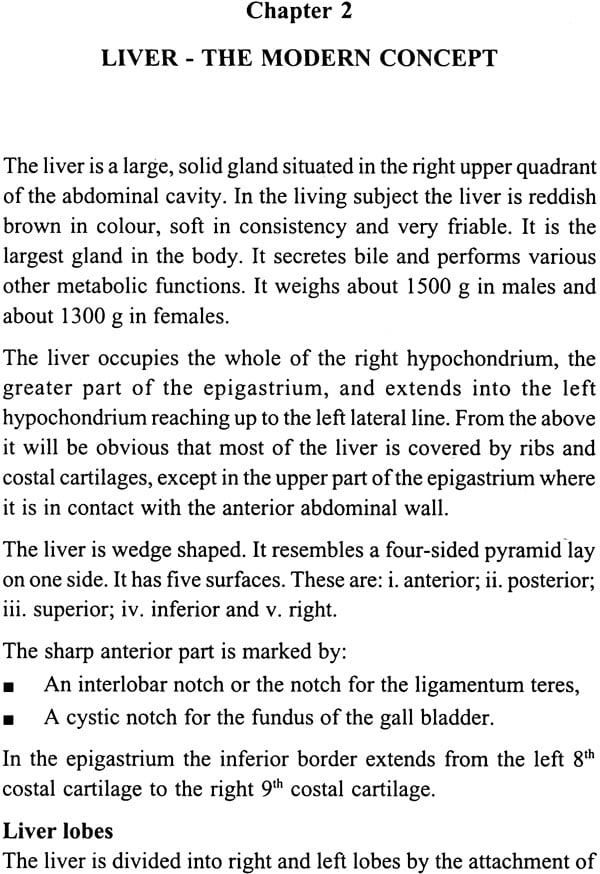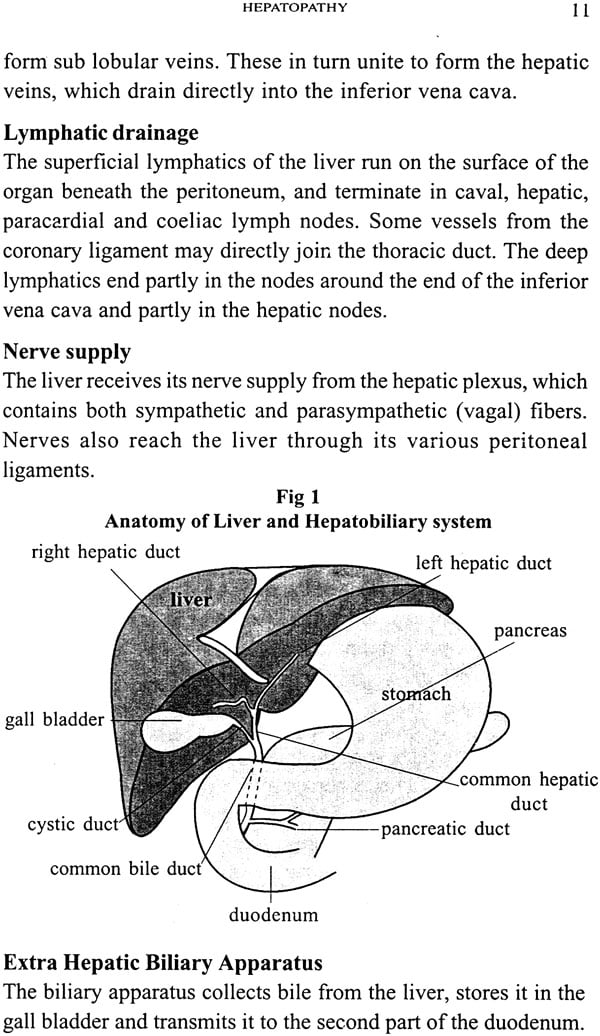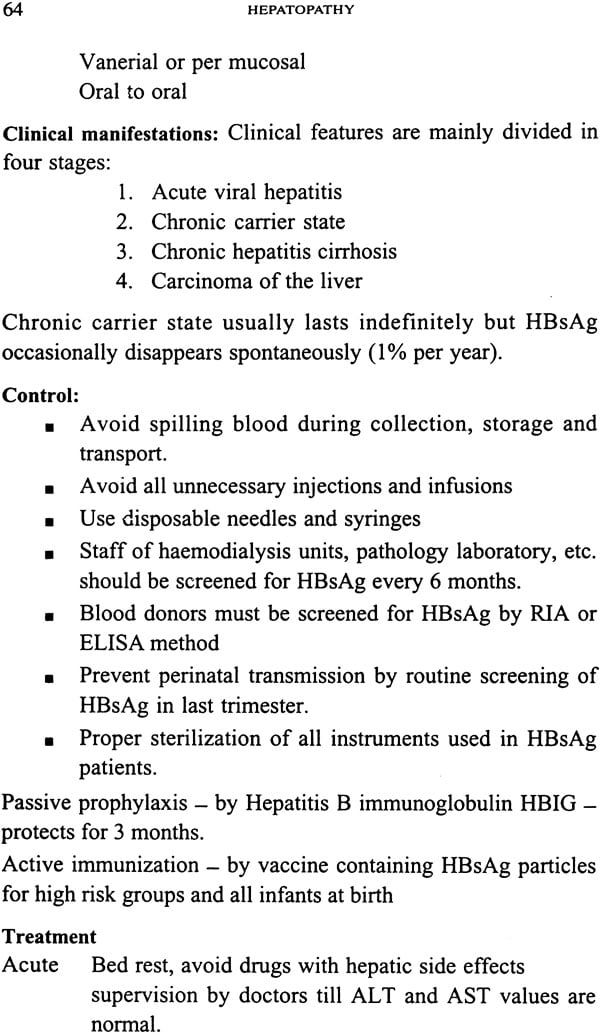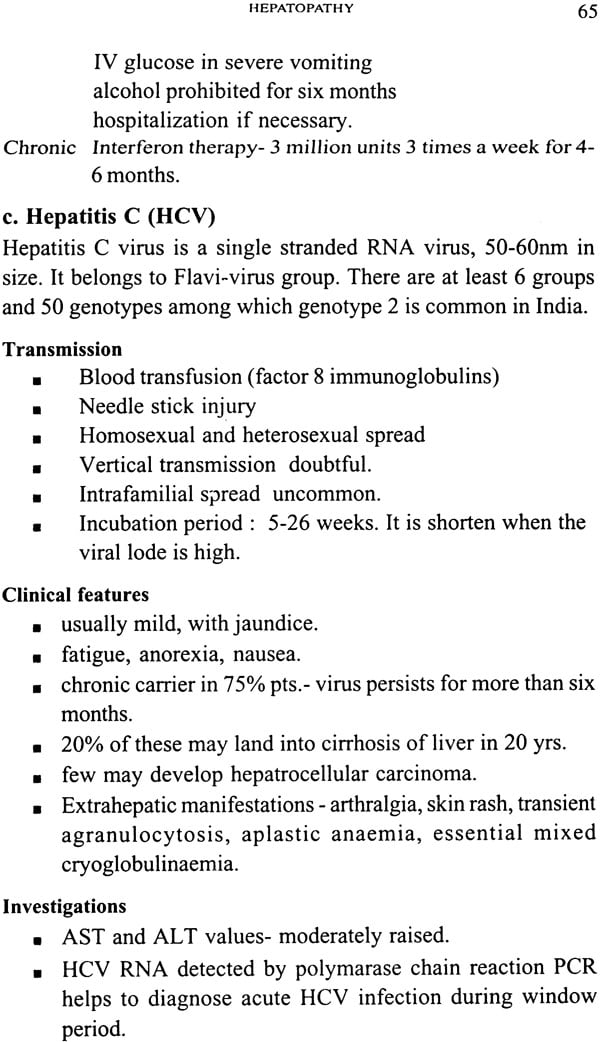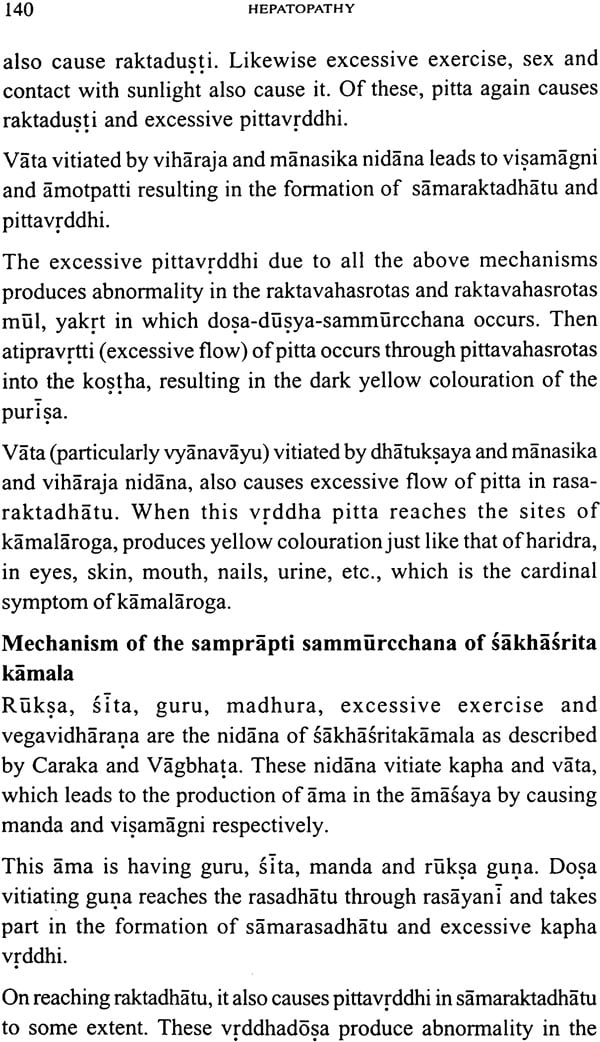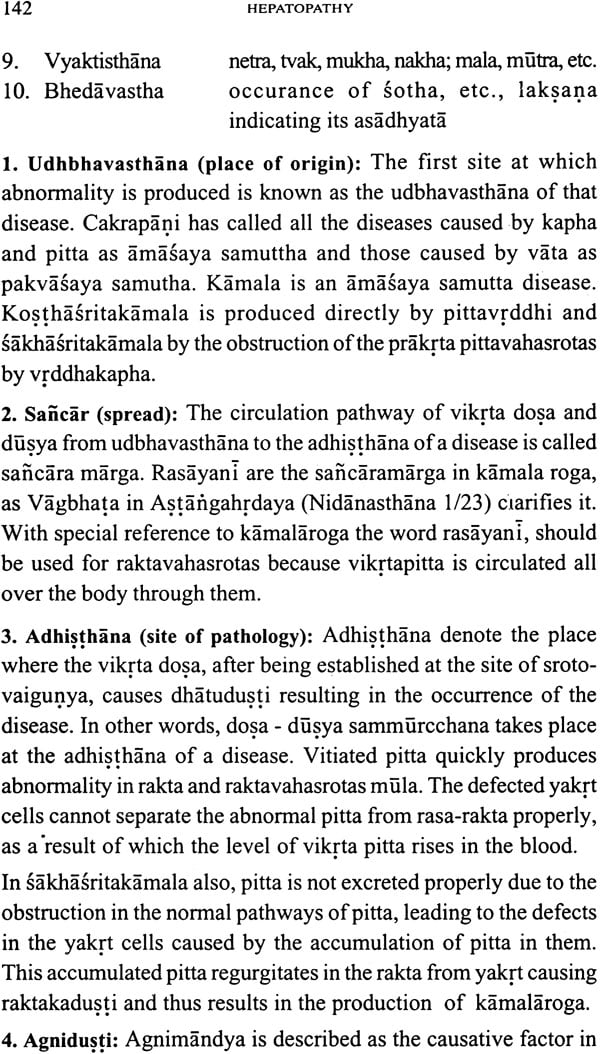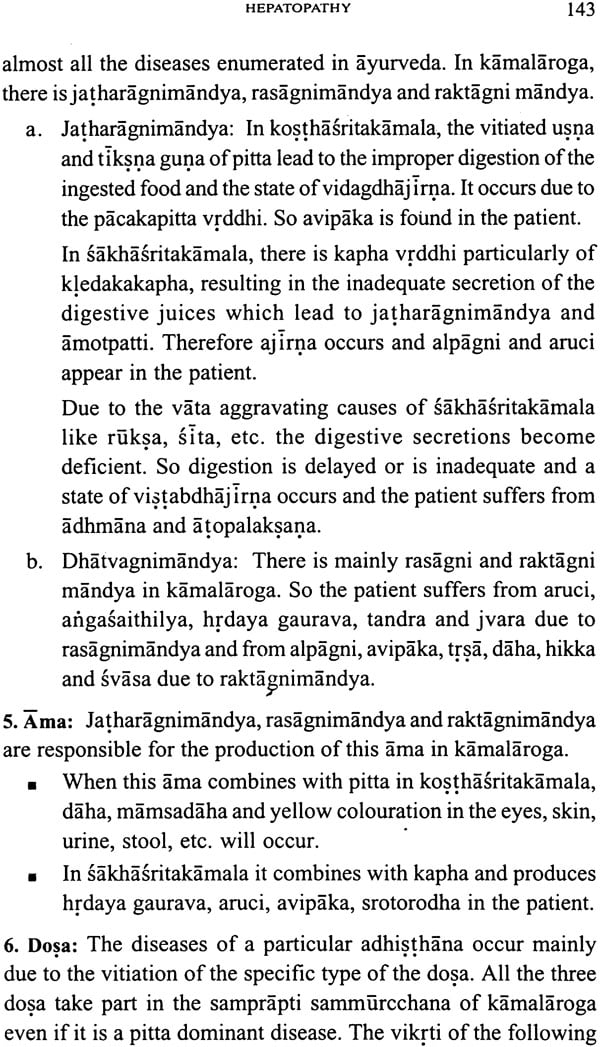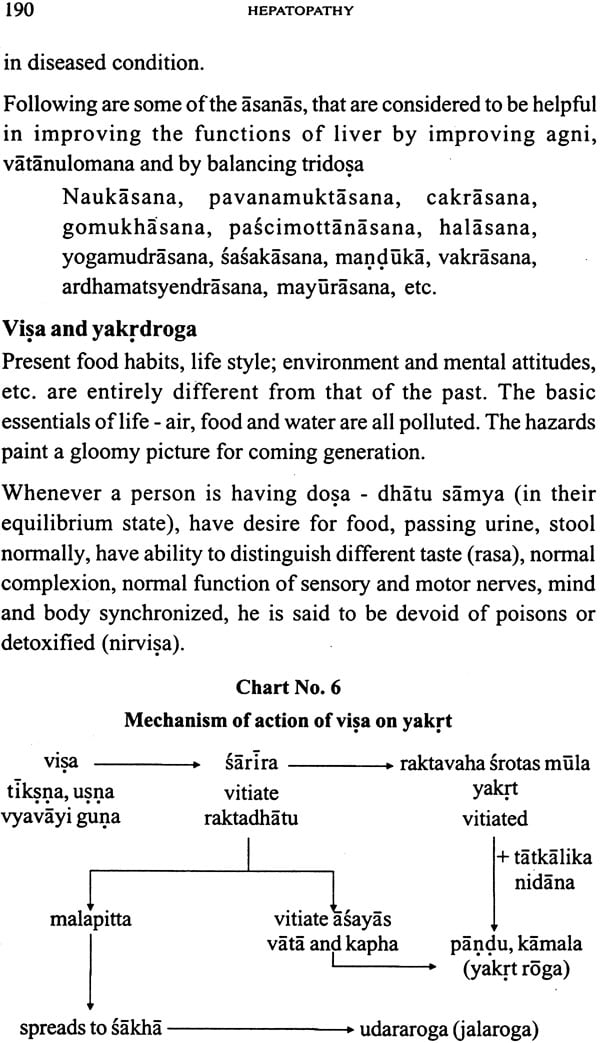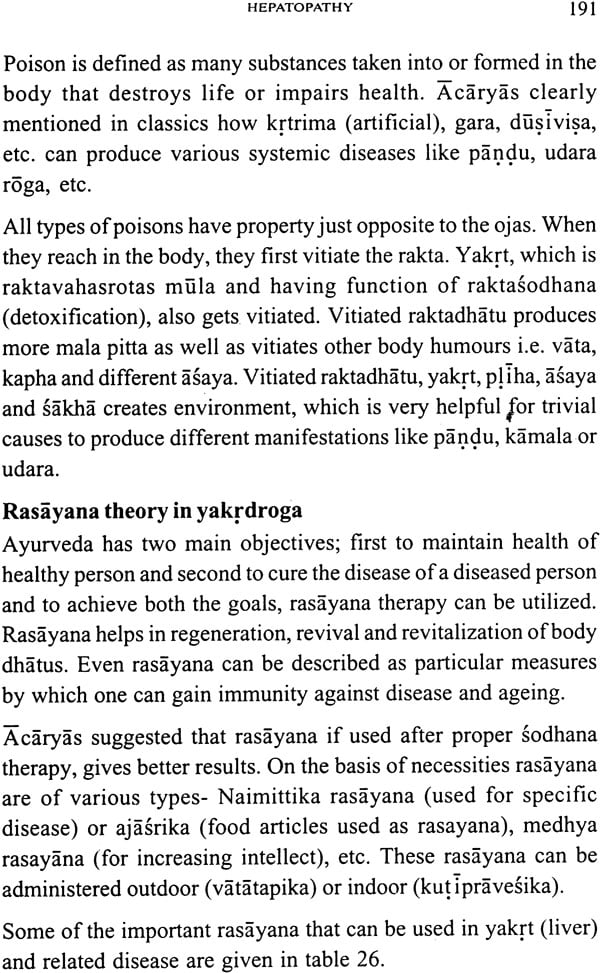
Hepatopathy A Study on Liver Disorders
Book Specification
| Item Code: | IDC166 |
| Author: | Dr. Gopalani Ajay G. and Dr. Bhushan A. Sarmandal |
| Publisher: | Arya Vaidyasala, Kottakkal |
| Language: | English |
| Edition: | 2006 |
| Pages: | 217 |
| Cover: | Paperback |
| Other Details | 8.3" X 5.4" |
| Weight | 270 gm |
Book Description
Back of the Book
All the functions of liver are very much related to healthy life. In modern science, the liver is given prime importance, just like the heart in relation to emotions, etc. thus, the diseased conditions of this organ always attract the attention of medical science.
The authors have made a successful attempt to correlate the available references to liver disorders in ayurvedic literature to the modern concepts. This comparative approach is followed in clinical methods also.
Preface
Arya Vaidya Sala has been conducting annual ayurvedic seminars in connection with the Founder’s Day Celebrations since 1994 and All India Essay Competitions since 1965. The proceedings of seminars and prize winning essays are being published regularly. They cover a wide range of topics and have become a veritable source of information to the students and researchers in the field of ayurveda. Hepatopathy was the topic for essay competition in 2005.
All the functions of liver are very much related to healthy life. In modern science, the liver is given prime importance, just like the heart in relation to emotions, etc. thus, the diseased conditions of this organ always attract the attention of medical science.
The authors have made a successful attempt to correlate the available references to liver disorders in ayurvedic literature to the modern concepts. This comparative approach is followed in clinical methods also.
This essay, ranked first in the competition, deals with all the aspects of hepatopathy. Hope that this will be useful for students and scholars alike
Introduction
Liver is the largest organ in the body. It is very much important in carrying out different functions related to metabolic process, haemopoietic process, immunological functions, etc. Functional strength of liver cells is upto such extent that even after 80% of their destruction, they can regenerate and maintain their proper functioning. All the functions of liver are very much related to healthy life. In various literatures, liver is given prime importance in relation to emotions, just after the heart. The diseased condition of this organ, thus, always attracts the attention of medical science.
Hepatopathy is the term used to denote a group of disorders associated with liver. In modern references we can find various disorders, such as hepatitis, alcoholic liver disease, cirrhosis, various disorders related to biliary system as cholelithiasis, cholecystitis, etc., under hepatopathy. In all these disorders, there is structural involvement of liver and biliary system, which further leads to their functional impairment.
If we go through the classification of disorders in modern texts, we can see most of them are based on anatomical considerations. Body is divided into various anatomical systems. The diseases related to such systems are grouped together and are classified as diseases related to that system or organ. Hepatopathy is also one of such classification. But if we go through ayurvedic texts we cannot find such classification.
There is no description of liver disorders as a separate entity in ayurvedic classics. Even the description about liver is also very little. There is no proper description about the anatomy of liver, gall bladder. Still we can’t say that our Acaryas have ignored this major organ of the body or they were unaware of it, because liver in ayurvedic texts also, is given more importance in connection with metabolic functions. Liver is said to be the seat of pitta. All the functions of pitta, especially ranjakapitta are attributed to liver. Again liver and spleen are considered as the root of raktavahasrotas. So liver is very much important in al diseases concerned with raktavaha and pittavaha srotas. In ayurvedic texts, physiologically, we can say liver is given as much importance as in modern texts.
Possible reasons for not describing the yakrdroga as a separate group of disorders may be:
i. most of the ayurvedic classification of diseases is based on symptoms.
ii. in pathogenesis more importance is given to the physiology than structure involved.
Hence we can see in classical texts the description of diseases like pandu, kamala, udara, but we cannot find their direct relation with yakrt.
Thus in this essay we are trying to explore the disorders related to liver and biliary system from modern as well as ayurvedic points of view.
| Preface | 5 | |
| 1 | Introduction | 7 |
| 2 | Liver - The Modern Concept | 9 |
| 3 | Yakrt - Ayurvedic View | 20 |
| 4 | Modern Methods of Examination | 29 |
| 5 | Ayurvedic Methods of Examination | 34 |
| 6 | General Investigations in Hepatopathy | 38 |
| 7 | Modern Concept of Hepatopathy | 51 |
| 8 | Acute Hepatitis | 58 |
| 9 | Chronic Hepatitis | 68 |
| 10 | Auto-immune Hepatitis | 72 |
| 11 | Alcoholic Liver Disease | 75 |
| 12 | Portal Hypertension | 79 |
| 13 | Liver Cirrhosis | 84 |
| 14 | Toxic and Drug induced Hepatitis | 93 |
| 15 | Parastic and other Cysts of Liver | 97 |
| 16 | Neoplasms of the Liver | 100 |
| 17 | Hepatic Abcesses | 105 |
| 18 | Miscellenous Considerations | 108 |
| 19 | Biliary System | 113 |
| 20 | Kamala - Ayurvedic concept | 132 |
| 21 | Samprapti of kamala | 139 |
| 22 | Treatment of kamala | 148 |
| 23 | Udararoga | 155 |
| 24 | Yakrdroga | 159 |
| 25 | Raktapitta | 162 |
| 26 | Pandu | 166 |
| 27 | Yakrdvidradhi | 170 |
| 28 | Hepatic Tumours - Ayurvedic Concept | 173 |
| 29 | Madatyaya and yakrdvyadhi | 178 |
| 30 | Pittasmari | 180 |
| 31 | Differential diagnosis in yakrdroga | 182 |
| 32 | Miscellenous Considerations | 187 |
| 33 | Sadhyasadhya and arista in yakrdroga | 193 |
| 34 | Ayurvedic research drugs in Hepatopathy | 201 |
| 35 | Discussion, Summary and Conclusion | 204 |
| Appendix | ||
| I | Ayurvedic Research Drugs | 210 |
| II | Bibliography | 216 |
| III | Abbreviations | 218 |
| IV | The Authors | 219 |
